Confucius says: When you reach bottom of pit, stop digging

This week: Stepping stones; Geology; FutureLearn; Social media;
I took the car to the garage on Monday. I’ve only been trying to get the local vehicle fitter to repair it since October.
He diagnosed the problem two weeks ago as a wheel bearing, and that after having had it for a week in January when nothing actually happened!
So here we are at the weekend and he still has the vehicle. We did have another all day powercut this week, which means everything closes down, but the UK average billing time for a wheel bearing is 3½ hours…
I came back over the hill using the old donkey track, on a slightly damp morning. As I came over the saddle and started the descent into Dol I could see a storm sweeping in from the West. I got home just before the heavens opened.
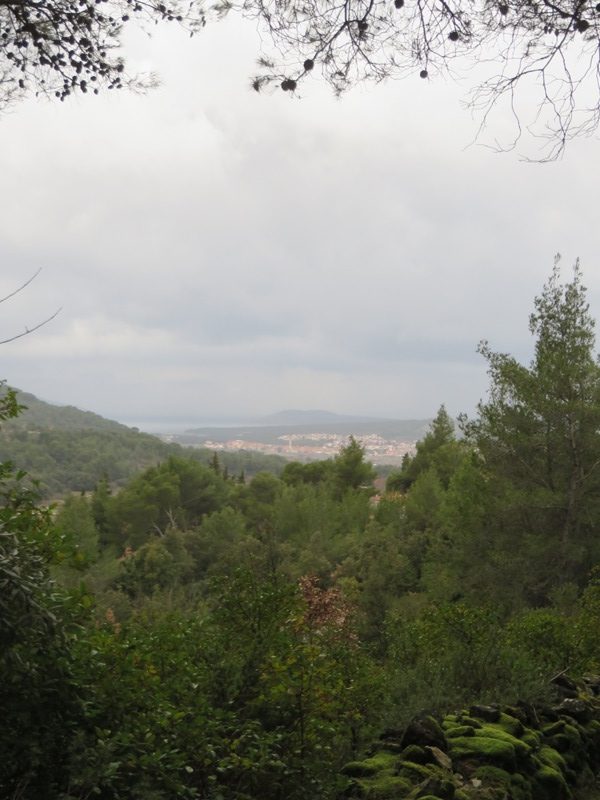
Stepping stones
I have been getting ready to do more work on building the steps down into the Top Orchard. This has entailed moving a few very large stones and some not so large stones, then digging out a channel for the rain water drain to go into.
This needs installing before the whole thing is buried under the fill that will support the stone steps. Working in the warm sunshine has been nice. Working with a cold Bura blowing in your face, less so.
In fact on one morning the wind was just too cold so I stopped and came in to do some other jobs. Things like sorting what seeds I will plant in the heated propagator.
But as Spring advances, the world is waking up. I found this Balkan Wall lizard,
Podarcis taurica , just out of hibernation, basking in the sun on Saturday morning. The first I have seen in the garden this year.
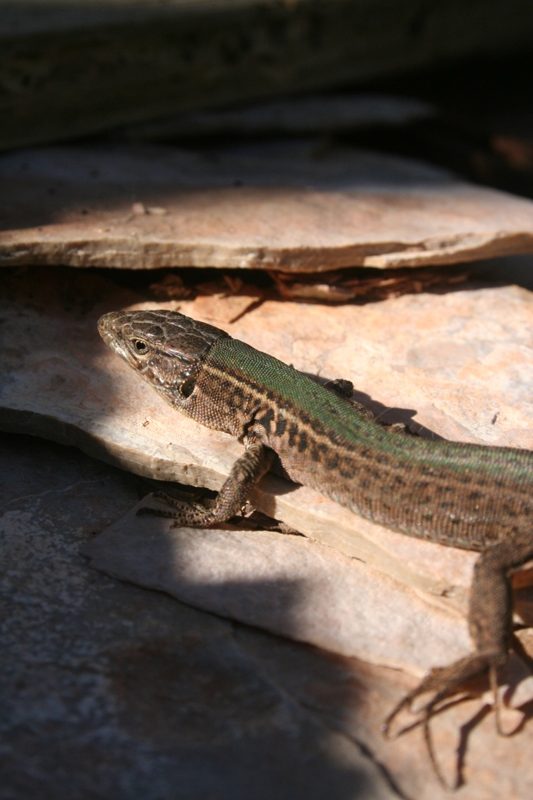
The soil in this part of the orchard is high quality, so I have been digging it out and saving it. There is absolutely no sense in covering good soil with spoil, especially when I have a dearth of quality soil.
So having dug out one spit deep, and reaching a stony layer, I stopped digging, just as advised by Confucius. As I hit the stones, I recalled one of his sayings: “When you reach bottom of pit, stop digging”, yet when I tried to find it online, I couldn’t?!
I’ve run up against the “space” problem again, and also my work methodology mantra of “OHIO” – Only Handle It Once. Moving large, very heavy stones any further than necessary is just not fun!
This area of the orchard is where I have been piling all the stones I have recovered through dismantling the old buildings, so it is fairly full of stone. But with some effort I managed to get the pipe in place and a substantial amount of soil recovered, working around the mini-boulders.

It has flagged up though, just how much work I have to do in this area to achieve my vision for not just a working orchard, but an extension to the living space.
Geology
My land is extremely stony, like all the land on the island.
I’m on the up-slope to the high ridge of Mesozoic limestone and Dolomite which is the backbone of the island. It runs the full length from Sućuraj in the east to Point Pelegrin in the west, past Grad Hvar before descending abruptly into the Adriatic Sea.
I also have a belt of soft sandstone which dissects my land. Both rocks are the remains of millions of tiny marine creatures, laid down is great sheets during the Triassic period of Earth’s history, more than 250 million years ago.
Over the aeons, weathering has created the thin soils on the island at higher elevations ( I am on the 90 meter contour) and deep fertile soils on the plains and in valley bottoms.
This same cycle of weathering; rain, freeze, thaw, rain, has washed millions of tonnes of stone down. Large stones have been used for building, small stones are the bane of a farmers life. These small stones have been collected over the centuries and piled into any available corner. In places, every available corner.
I have once such corner, comprising probably three or four cubic meters of these small stones, all piled behind a retaining wall, close to where I am working.
Every time the land was cultivated, the stones which were brought to the surface were collected and thrown onto the heap. It still goes on today. The difference is that I riddle soil to remove the stones, then re-purpose them into all-weather paths. But I have several heaps of small stones that I will need to move.
The stones are limestone, which look nice in sunlight, but when they weather they make an alkaline soil, so only those plants which thrive in alkaline soils grow well.
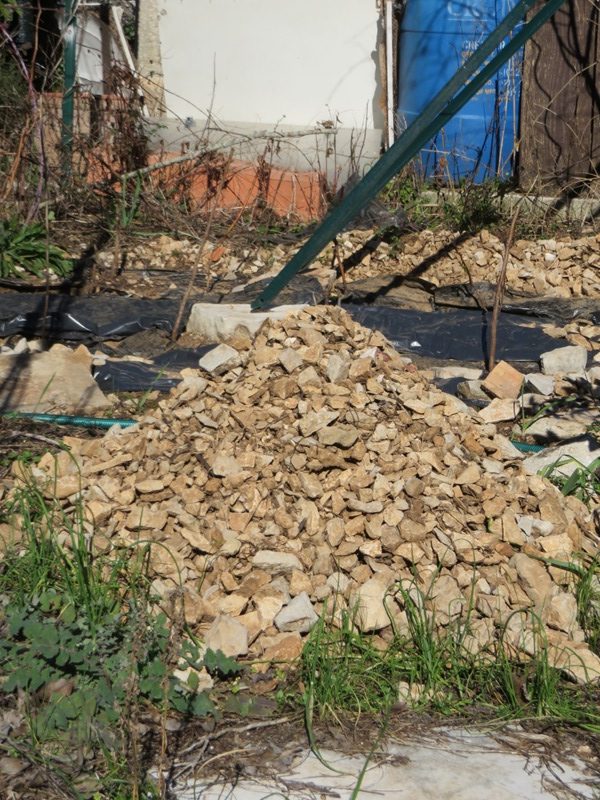
They are a pain when cultivating, so riddling soil is a relatively quick way to remove them and to make the soil easily worked in the future. But much as I would like to, I can’t riddle the whole orchard!
While I was fitting Metaposts this week to support the cherry trees, one in particular kept hitting a large stone, about a half meter down. It eventually deflected off the stone. But as I have one of the wooden posts which is a little less than straight, I will use it with this Metapost and by the time I have the support wires in place it will be just about vertical.
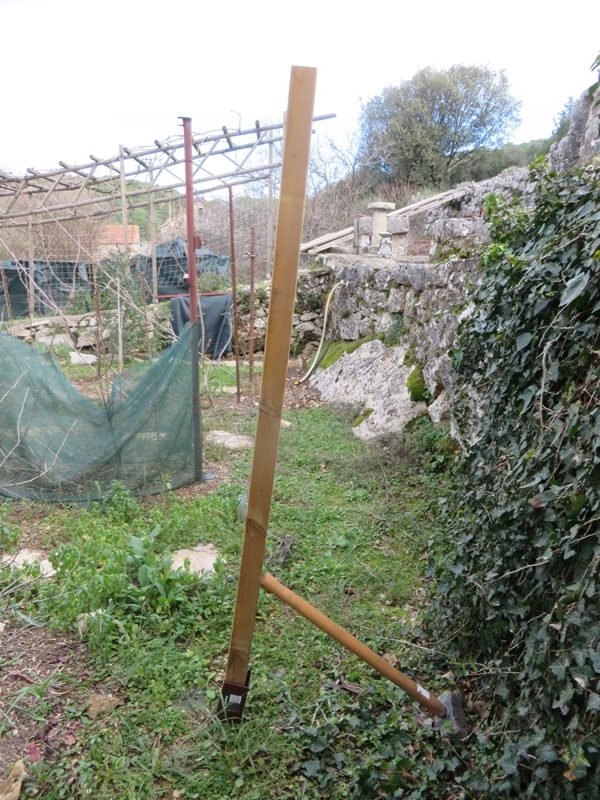
FutureLearn
I’m taking an online university course at the moment, run by Dundee University Dept. of Environmental Sciences, through FutureLearn, it’s entitled simply “From soil to sky”.
It is delving in great detail into the science around soil, micro organisms, weather and climate. It’s helped me a bit so far, to confirm that the approach I have been taking about mapping, measuring and recording is the correct one. I haven’t been given the solution to all my problems yet – probably because there isn’t one… 😉
Looking at this year’s Springwatch calendar, we are behind last year. Bearing in mind that the winter 2017/2018 was colder than the one which has just passed, it suggests that quite a number of plants need cold to jerk them into life. But others need spring sunshine to warm the soil.
I also wonder if the protective screen I have put round the citrus trees has affected plants which are on the shady side. I have a large patch of purple crocus, that in 2018 were already in flower.
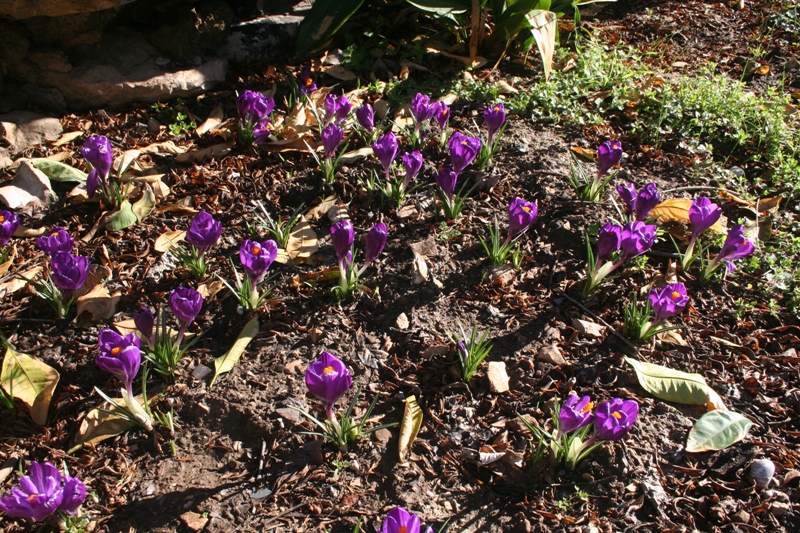
This year they have been shaded from the sun and are only at the first shoots stage. It’s relationships like these that I hope to learn about in the Dundee course.
One windy morning this week I completed the work on my propagator.
My clever little feline discovered that she could prize open the top and climb inside, to bask in the warm sunshine.
I’ll not be able to stop this until I get to the mainland and obtain a piano hinge for the lid. But at least I prevented damage by making a central support out of some aluminium channelling.

It took some precise measuring, and a working model made out of paper, to confirm I had the angles right. These were then marked on the channelling before being carefully cut with a hacksaw, before I bent the support into shape and bolted it to the sides.
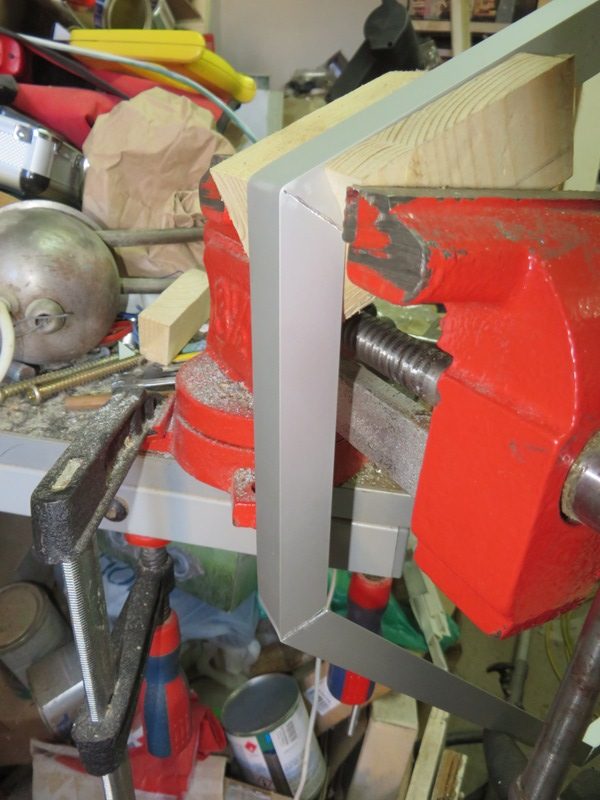
The propagator is now ready to accept plants – once I have them planted into the growing trays.

I have trained Callie to empty the pending tray though, when not sleeping in the propagator that is. The only slight problem is that she empties the tray onto the desk below. Oh to be a cat with a nice home…

This year I have the correct John Inis seed compost, so I’m hoping to have more success than previous years with propagating seeds. But changing completely how I grow plants from seed, rather than incrementally does mean that I’ll never be quite sure what my previous problems have been.
In the greenhouse the shrubs I have had over wintering are all now in active growth. This week the red flowered Hamamelis intermedia “Diane” has come into flower. Now when this is a two meter high shrub in the garden, I think it will look very nice.

Social Media
Part of the Dundee University course is accessing an International Grow Calendar using social media.
The theory is that anyone on the course can put in the dates they plant anything, when they plant it out and then when they get their first harvest. This data recording is all taking place in a Facebook group.
I’ve resisted the urge to be involved in Social Media for a long time, but was persuaded to join FaceBook last year. I don’t put up photographs of “what I’m having for supper”, or “where I was this morning”, but I have found a use for social media in getting quick answers to questions.
However until the International Grow Calendar really gets going, I don’t have anyone withing 1,000 kilometers of where I am. So the experience of my closest co-writer in Milan planting Courgettes, is not a great deal of use.
But what I have discovered over the past few months is the huge amount of specialist knowledge that is available if you choose your groups wisely. Take this photograph for instance.
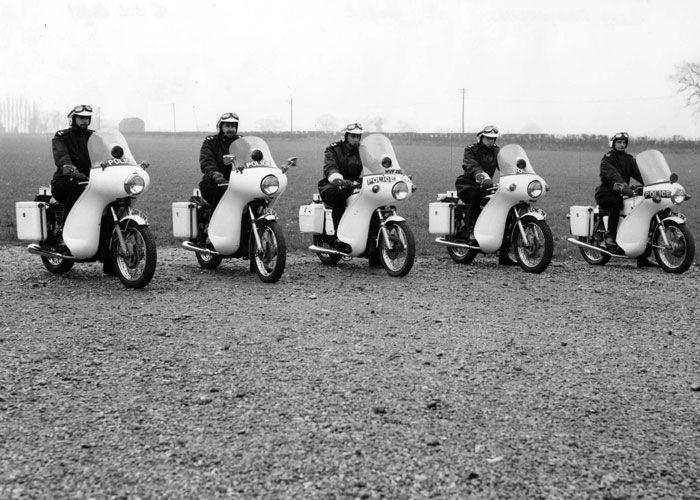
Not the best quality, but five motorcycles can be identified, three Triumph SAINT’s, a Rickman Métisse and a Norton Commando Interpol.
The Rickman is of great interest to me as I am researching the history of this marque. Only 81 were made for police forces and Norfolk Joint Police purchased just one.

This is their Rickman. Using photoshop I could enhance and manipulate the image to get some of the registration numbers, but not the full number for the Rickman, so I turned to a FaceBook Traffic Officers group.
This led to one of the officers on the photograph being contacted and actually joining and becoming a valued member of the group. Later another colleague had a better quality copy of the photo and I got the full registration number, but in addition, all the names of the riders too.
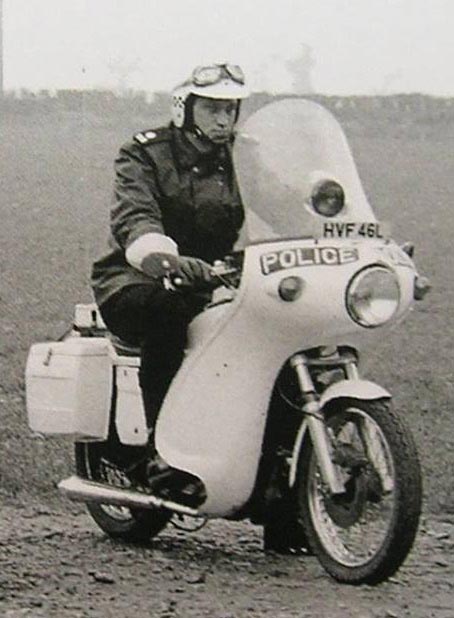
Currently group members are trying to trace him and see if he has any more photographs of this enigmatic bike.
Another recent research project was to try and get information about this unusual police vehicle.
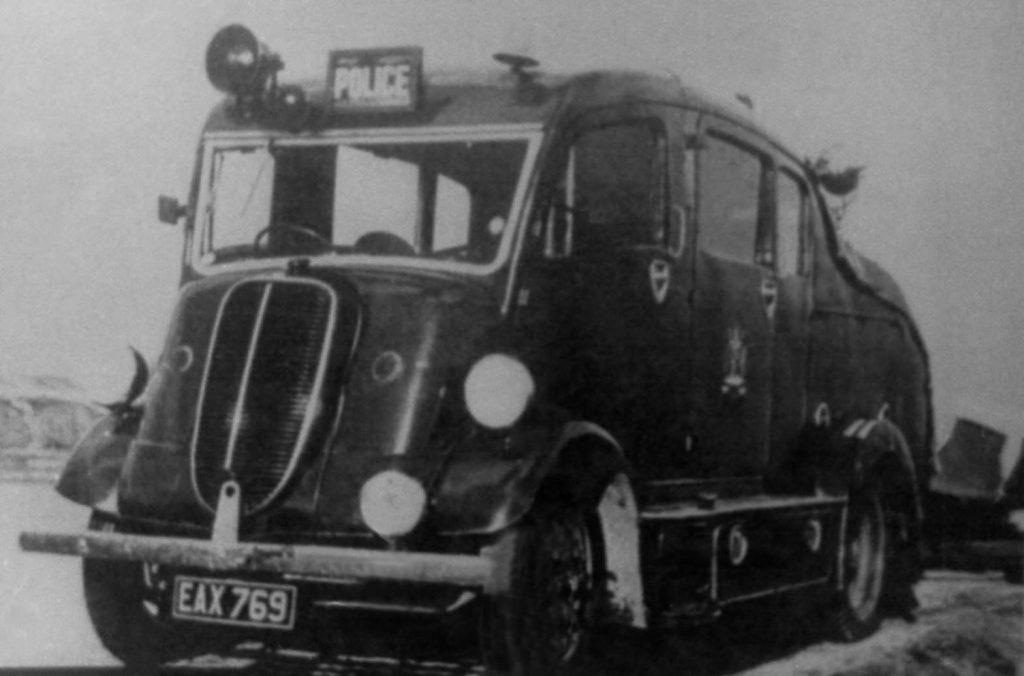
It didn’t take long with the help of enthusiasts from a fire brigade historic group, a police history group and some knowledgeable folk in a historic police vehicle group to discover some more photographs.
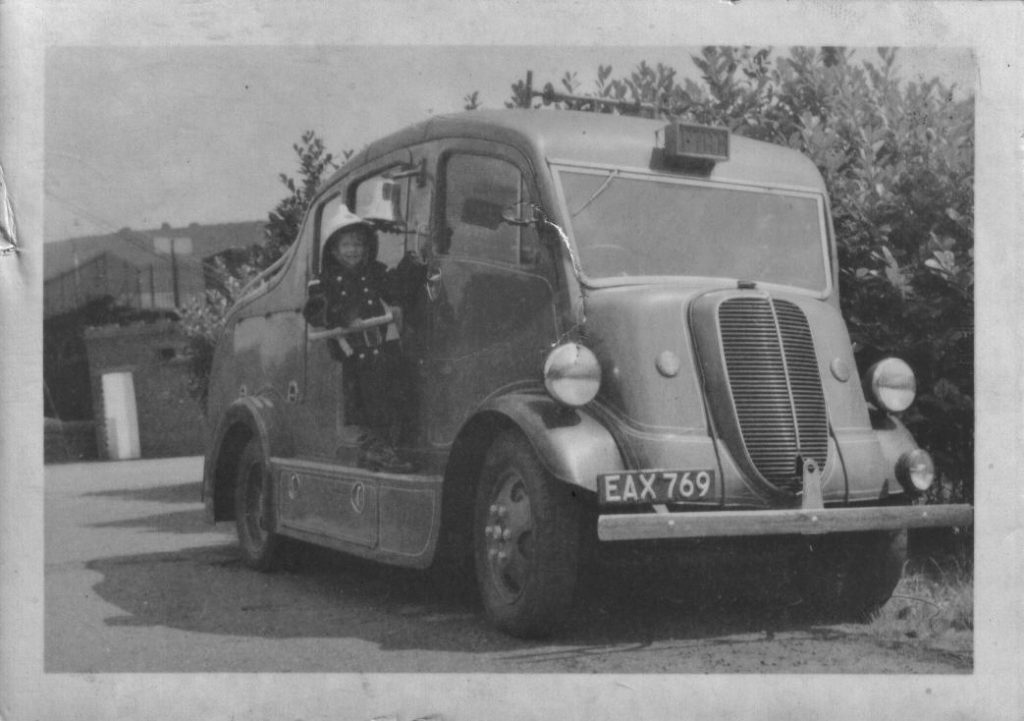
It started life as a municipal fire appliance in Monmouthshire, a historic county in East Wales.

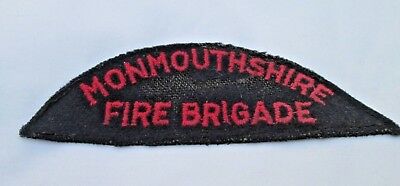
The vehicle was built in Liverpool by John Kerr in 1942 and actually featured in their catalogue of equipment.
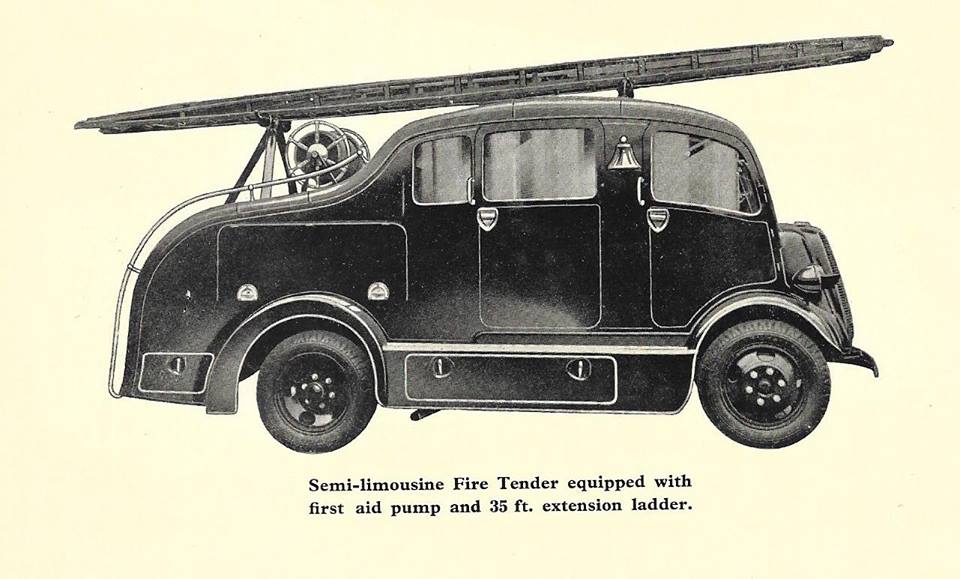
Then after 20 years service in the county fire brigade, including during the Second World War, it was transferred to the Monmouthshire Constabulary and became a police rescue tender. I even came up with a poor quality photo of it with it’s police equipment.
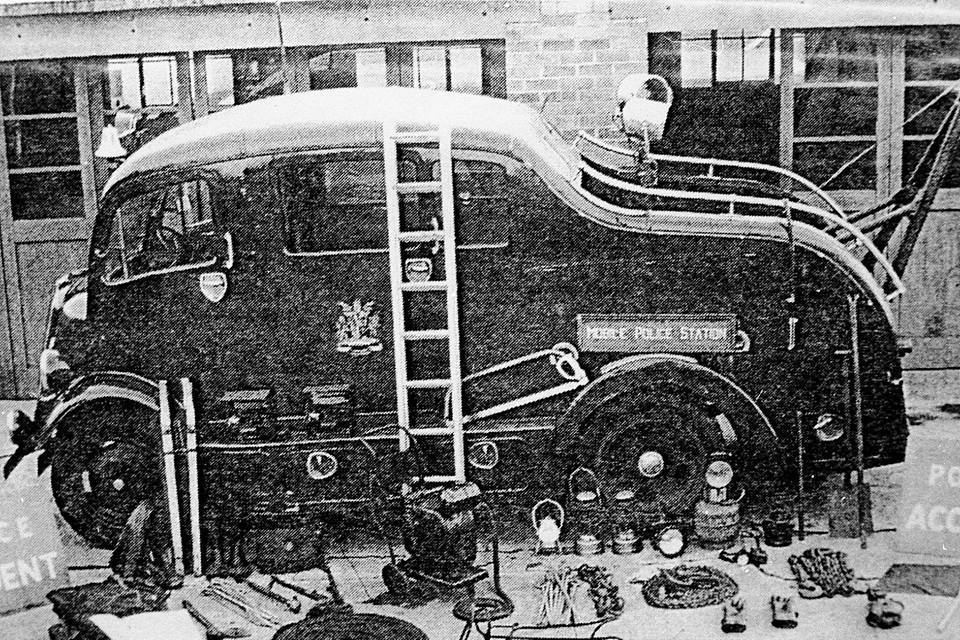
What is missing though is when it ceased being used. Whilst there is a vast and growing amount of information available on the internet, there are still gaps.
The original vehicle registration cards from the days before 1974 when the UK national vehicle computer system started, run into millions. These have not been digitised – there are too many – and they are spread around all the various county archives in the UK. To get some information, you have to still do physical checks. This is a little difficult from 3,500 kilometres away!
I have always been deeply sceptical of Social Media and I think in the early days, rightly so.
But as we are now in the era of SM2.0 and we have become aware of how our data can be misused, abused and used against us, it also allows us to be selective.
So I have almost no information on my timeline, seldom post a comment, never add a status update, but as I do research into my police photo archive, I find that Social Media and FaceBook in particular allows me to contact huge numbers of people very quickly – and get answers.
Now I just have a bit more research to do about PC Leman and his Rickman motorcycle… NRC
3 Responses
John Bailey.
Thank you Norman.A lot of thought and time went into your blog. A very interesting read.
Dorcey Wingo
Jolly good, Norman.
Q: What was the engine of the Fire Tender, if you know?
Life in a Dol house
It’s a Fordson V7 chassis with a Ford V8 flathead engine. Fordson was a mager UK supplier of five vehicles to the NFS and AFS in World War II. This vehicle was purchased just before all UK fire and rescue services were nationalised in 1942.